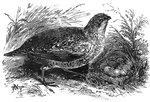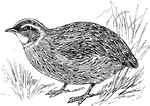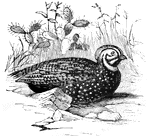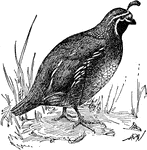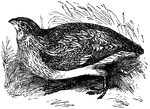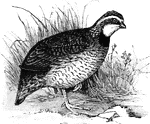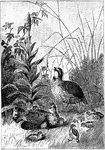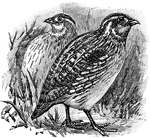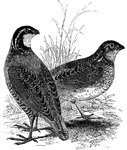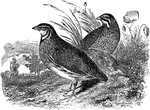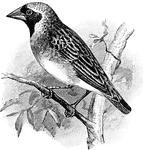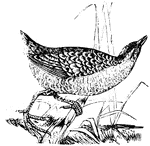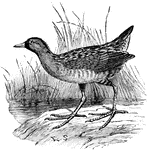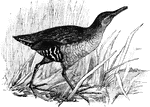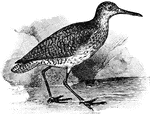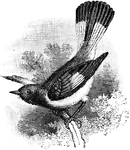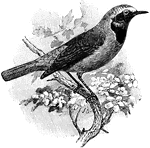105 illustrations of birds including: quail, quelea, querula, quezal, rail, raven, razorbill, redpoll, redshank, redstart, reed-warbler, regulus, rhea, robin, roller, rook, rosella, and ruff
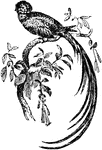
Quezal Bird
A most beautiful Central American bird of the Trogon family. It is about the size of a magpie and the…
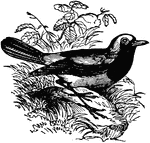
Redstart Bird
A bird belonging to the family Sylviadae, nearly allied to the nearest, but having a more slender form…
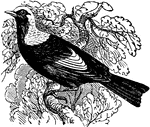
Regent Bird
A very beautiful bird of Australia, belonging to the family Meliphagidae or honey-eaters. The color…
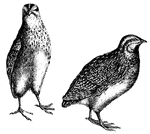
Quail
The quail has a small beak, a short back toe inserted high up, tarsi furnished with a rudimentary spur…
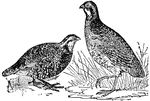
Quail
A class of birds of the partridge family, differing from other partridges mainly in being smaller and…

Common Quail of Europe
"Coturnix dactylisonans. Messina Quail. Migratory Quail. Common Quail of Europe. Upper parts variegated…

Andelusian Quail
Also known as the hemipode, the Andelusian quail is found in Spain, North Africa, and Sicily.
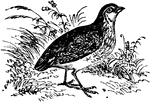
Common Quail
A genus of rasorial birds, included in the family of partridges, to which they are nearly allied, but…
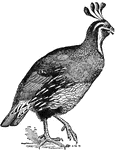
Lophortyx Californicus Quail
"The Quail is a small game bird; the Virginia species is common in North America, and so far south as…
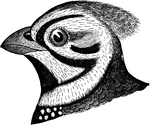
Massena Quail
"Cyrtonyx massena. Massena Partridge. Male: Upper parts intimately waved with black and reddish-brown…

Mountain Quail
"Orortyx picta. Plumed Partridge. Mountain Quail. Back, wings and tail olive-brown, the inner secondaries…
Quezal
An endangered South American bird with vibrant red and green plumage. It is thought to be extinct.
Quezal
"Pharomacrus mocinno, the Quezal of the higher districts of Guatemala to Veragua, is brilliant iridescent…
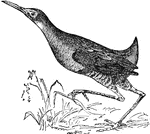
Rail
A genus of birds that includes about 150 species, whih are distributed throughout the world. They include…
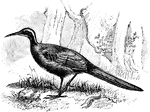
Malaysian Rail Babbler
The Malaysian Rail Babbler (Eupetes macrocerus) is a songbird in the Passeriformes order.
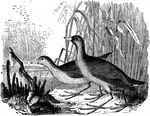
Carolina Rail
"Porzana carolina. Carolina Crake. Common Rail. "ortolan." Above, olive-brown, varied with black, with…

Clapper Rail
"Rallus longirostris crepitans. Clapper Rail. Salt-water Marsh-hen. Mud-hen. Above, variegated with…
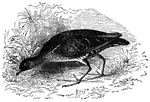
Common American Carolina Rail
Also known as the Carolina rail, soree rail, and the English rail, the common American rail is found…
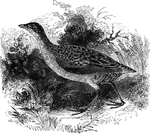
Land Rail
Generally inhabiting Europe, the land-rail is also known as the corn-crake. It averages about seven…
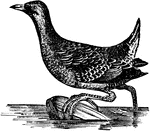
Small Carolina Rail
"Porzana carolina. Carolina Crake. Common Rail. "ortolan." Above, olive-brown, varied with black, with…

Common European Water Rail
The common European water-rail is native to warmer parts of Europe, as well as portions of Asia.

Raven
Ravens are sedentary birds, and never voluntarily abandon the place they have elected for their home,…
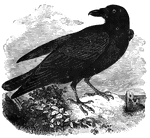
Raven
The raven has a broat palate, its diet including worms, brubs, reptiles, birds' eggs, fish, and shell-fish.
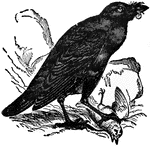
Raven
"The Raven is a large bird of the crow family. The raven has played an important part in mythology and…
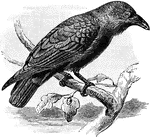
Raven
A bird with black plumage with a metallic sheen, the bill and feet are ebony black, the wings pointed…
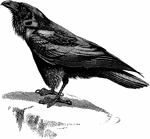
Raven
"Corvus corax, the Raven, are generally black with a purplish or greenish gloss, and frequently with…

American Raven
"Corvus corax. American Raven. Feathers of throat somewhat stiffened, lengthened, pointed, lying loose…
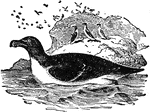
Razorbill
"The Razorbill is an aquatic bird, the common auk, the sole species of the genus, the great auk being…
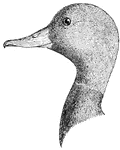
Large Redhead
"Fuligula ferina americana. Red-head. American Pochard. The feathers of the head somewhat full and puffy,…
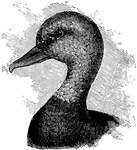
Small Redhead
"Fuligula ferina americana. Red-head. American Pochard. The feathers of the head somewhat full and puffy,…
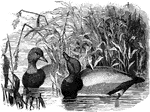
Redheads
"Fuligula ferina americana. Red-head. American Pochard. The feathers of the head somewhat full and puffy,…
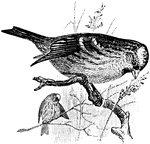
Redpoll
A small fringilline bird. The male has a crimson poll, a rosy red breast, and the plumage streaked with…
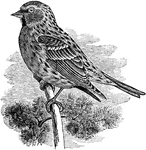
Common Redpoll
"Aegiothus linaria. Common Redpoll. Common Red-poll. Frontlet, lores, and throat-spot sooty-black. Crown…
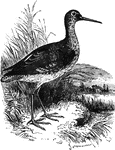
Spotted Redshank
The common red-shank averages about twelve inches in length, and makes its home along sea-shores, and…

Redstart
A genus of American birds, which are native to a region extending from Canada to Bolivia. About a dozen…
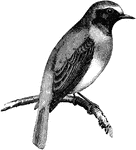
Redstart
"Our Ruticilla phoenicurus,the Redstart, is grey, with brown wings, chestnut breast, rump, and lateral…
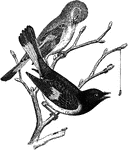
American Redstart
The American Redstart, Setophaga ruticilla, is a New World warbler. They breed in North America, across…

Black Redstart
A black redstart perched on a branch in front of a stone building. It greatly resembles the redstart.
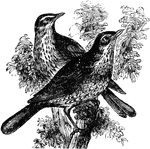
European Redwing
Two European Redwing birds sitting on a tree branch. These song birds are usually brown with darker…
